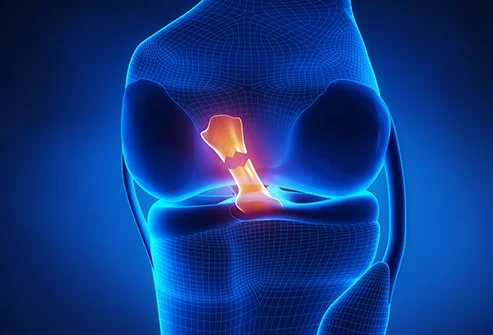Millions of American’s deal with chronic pain every day. In many cases, they do not know the exact cause and do what they can to deal with the pain. For some people, they live with their mild chronic pain, and it does not cause a great disturbance in their lives. Many mild cases even eventually go away as the cause heals and the body repairs itself. That is not the case for tens of millions of Americans.
But for some, their chronic pain is a lot more severe. In these cases, it can be a bit of a question as to what to do next. There are plenty of self-proclaimed experts that will give you a variety of recommendations. This pain can be an excellent reason to visit the doctor, but before you do, you might be trying to figure out what the cause is on your own. For people who are suffering from chronic knee pain, the reason could be something they might not have considered; It could be a torn, or partially torn, ACL. If you believe you may have injured your ACL, here are a few things you should do and a few things that you should know.
First, it may be helpful to understand what your ACL is and how it is essential to the function of your knee.
What is an ACL?
The ACL stands for the anterior cruciate ligament, and it is the tissue that connects the thigh bone to the shinbone, at the knee. This provides the knee with much-needed stability. The ligament prevents excessive movement in the knee through its connection from the tibia to the femur. The ACL also has nerve endings that sense when the joint is moving beyond its normal movement. The ACL will then be able to move correctly to prevent injury. Most ACL injuries occur during sports, but they can happen at any time and to anyone. These can occur from knee trauma as well as quick pivots and rapids movements.
ACL tears are relatively common, with between 100,000 and 200,000 reconstruction surgeries for ACLs taking place every year in the United States. There are three leading causes for an ACL tear. The first is direct contact. This means that the knee undergoes a direct trauma that causes the ACL to snap or tear. This happens in many sports. The second is indirect contact. This means that someone undergoes trauma on a different part of the body, and the force from that trauma causes the ACL to tear.
This could be from something like jumping in the air and landing poorly. The third way in via non contact this can be caused by things such as hyperextensions of the knee or an awkward pivot that can cause the snap. There are a few ways to know that you have torn your ACL in the moment. For example, you may hear a loud pop. This is usually followed by severe pain and rapid swelling.
How to Tell if You Tore Your ACL?
If you believe that you tore your ACL, there are several ways to help you diagnose yourself before you see a doctor. Some of the most common symptoms of a torn ACL are a loud pop, swelling, small range of motion, and inability to walk or stand. If you have many or some of these symptoms, you will have to go to a doctor to receive an official diagnosis.
Your doctor will give you a physical examination to see if an MRI will be necessary to confirm the diagnosis. There are two tests that your doctor will typically use to see how your ACL is functioning.
Lachman Test
In this test, your knee will be slightly flexed. Your doctor will then place one hand on your thigh bone and one hand on your shin bone. The tibia is then pulled forward to assess the anterior motion of the tibia in comparison to the femur. A torn ACL knee will keep moving forward with no endpoint. Most physicians believe that this test is superior to the other standard testing method.
Anterior Drawer Test
This is the other alternative to the Lachman test. The knee will be placed at a 90-degree angle, and the shin will be pulled forward with both hands using an explosive movement. If the knee moves forward too much, then that could be a sign that you do have a torn ACL.
If your doctor believes that you do have a torn ACL, then he will order an MRI on your knee. The MRI will show if your ACL is fully torn or partially torn.
What to do if you tear your ACL
If you suffer a full tear of your ACL, then your mobility will be compromised. Your knee will have a minimal range of motion, and the best thing to do is immobilize the leg completely. Serious ACL injuries are usually treated with ACL reconstruction surgery. This surgery fixes your ACL by grafting a part of a tendon onto it and then anchoring it to the snap ends of the ACL.
This process is done very often, but it is also very flawed. Due to the high volume of ACL surgeries every year, the downsides to a reconstruction surgery have more or less become accepted as the cost of a torn ACL. These downsides are numerous. First, around 30 percent of people who undergo an ACL reconstruction surgery tear their ACL again in the next 15 years. This can be an especially damaging effect for young people who experience tears because they are at a higher risk of tearing it again at some point throughout their lives.
This is specifically true for patients under 25 because Patients under 25 years old are four times more likely to re-tear their ACL after reconstruction surgery than those over 25. People who do not tear their ACL again are still not quite in the clear as knees also lose a great deal of stability after surgery. This is due to the grafting that takes place during the operation. The graft can lead to knee instability because the knee loses part of its stabilization mechanisms, leaving it with only one instead of the natural two, which in turn can create excessive wear and tear on the cartilage, meniscus, tendons, and ligaments.
People also see diminished performance in their knees after undergoing surgery. Lastly, ACL reconstruction surgery may lead to other knee problems down the line, such as arthritis. One study that followed 164 patients found that at a mean of 14 years after ACL reconstruction, the patient demonstrated a three-fold increase in osteoarthritis when compared to the opposite healthy knee.
Alternatives to ACL Reconstruction Surgery
There are alternatives to ACL reconstruction. One of the best options a person can utilize for an ACL tear is stem cell therapy. Regenerative medicine can solve the problems caused by ACL reconstruction surgery.
Furthermore, by rehabilitating an injury with stem cell therapy, people may be able to avoid these adverse outcomes altogether. By using stem cells derived from bone marrow, researchers have been able to improve the integrity of ACLs in 77 percent of patients within eight months. The use of regenerative medicine in healing injuries such as these could be revolutionary.
This is for a few reasons. First, the use of stem cells could be precious as it would allow people to undergo the rehabilitation process on their own terms. It would also allow them to heal without the worry of a re-tear after the surgery. For now, many people view using stem cell therapy to treat injuries as an alternative, but that should be flipped on its head. Stem cell therapy should be the primary method with surgery being its more severe alternative.
By foregoing surgery, people are ridding themselves of a great deal of pain that they will face, both during the rehabilitation process and with future injuries they might suffer. Regenerative medicine can solve this issue and many others that arise from orthopedics because stem cell therapy is the most natural and most effective way of healing. It is the body’s internal healing mechanism and, when harnessed to its fullest capacity, is capable of bringing about significant change.


